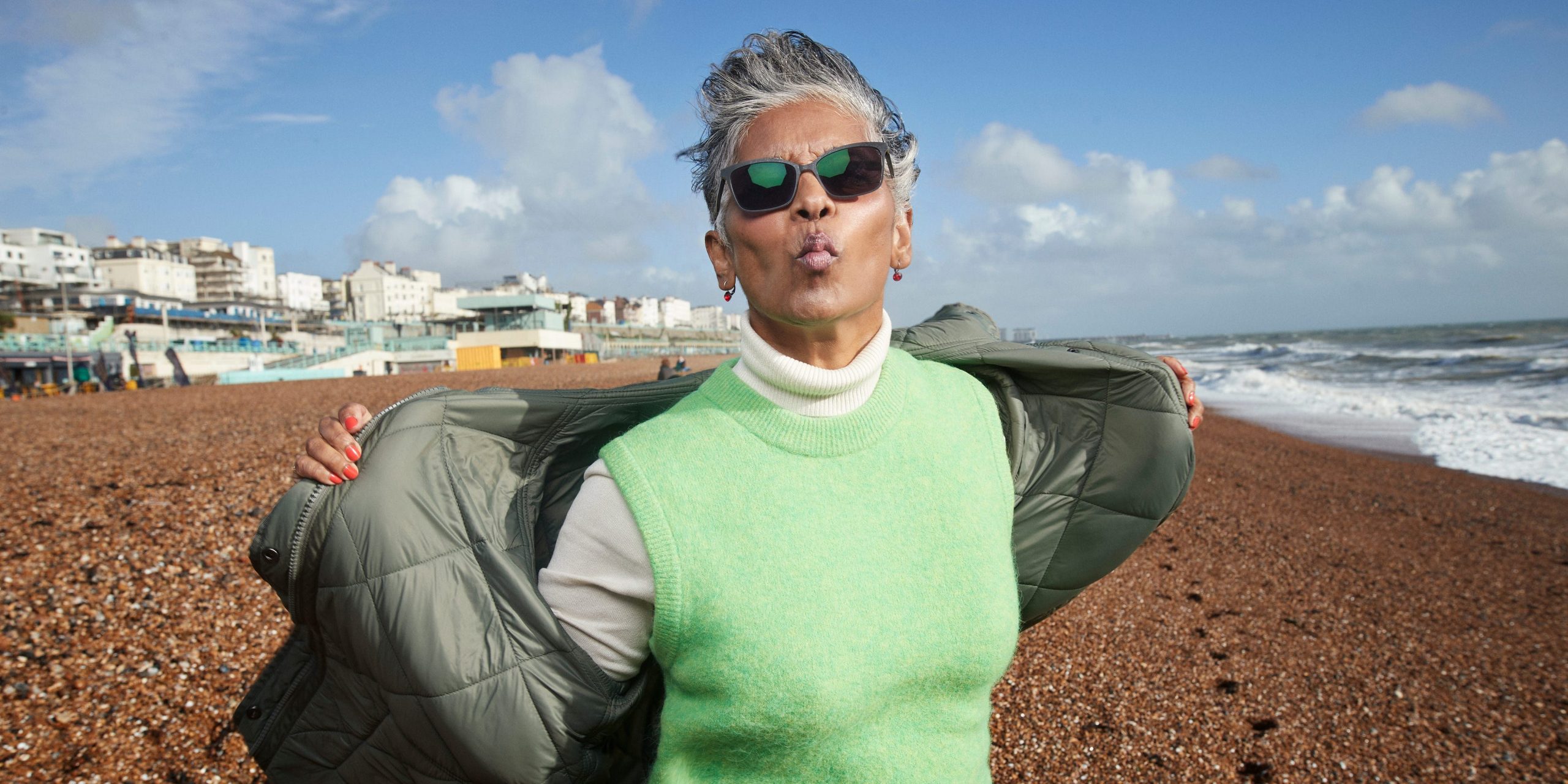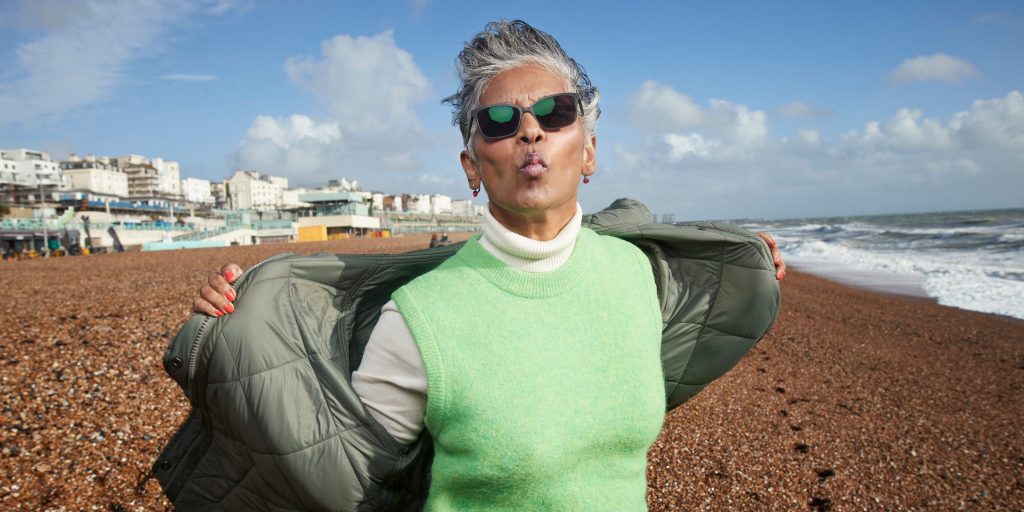
- Hot flashes come on suddenly and can cause you to feel uncomfortably warm and sweat.
- Wearing layers that you can easily remove is a simple way to mitigate a hot flash.
- Also try to stop smoking, limit alcohol, and maintain a healthy weight to improve symptoms.
- Visit Insider's Health Reference library for more advice.
About 75% of women experience hot flashes (aka hot flushes) — a sudden feeling of warmth in the upper body that sometimes includes sweating.
Hot flash symptoms can strike at any time of day, and sometimes they are severe enough to disrupt daily activities and cause anxiety.
"If you feel it coming on, you could be in a board meeting and sitting there going, oh my god, what am I going to do?" says Stephanie Faubion, MD, director of Mayo Clinic's Center for Women's Health and medical director of the North American Menopause Society (NAMS).
Hot flashes are the most common symptom affecting women going through perimenopause, the gradual transition between the reproductive years and menopause. And they may persist for many years — more than seven years, on average.
You may be able to deal with hot flashes on your own, but you should see a doctor if they're stopping you from doing what you need to do, Faubion says.
Here are seven ways to help manage hot flashes.
1. Wear layers
Because hot flashes can come on suddenly and make you uncomfortably hot, wearing layers that you can take off quickly and easily can help you feel cooler.
Moreover, hot flashes can make you sweat, so clothing made of fabrics that are wicking and drying, such as athletic clothing made of polyester, nylon, or wool, may be helpful, Faubion says.
2. Don't smoke
A 2015 study showed that women who quit smoking were less likely to suffer from hot flashes, and those who still did have hot flashes reported less severe and less frequent episodes compared to women who continued to smoke.
In fact, smokers tend to experience more hot flashes in general. The reason may have something to do with nicotine and vasodilation, or widening of blood vessels, "but nobody knows exactly why," Faubion says.
3. Limit alcohol
Alcohol can trigger hot flashes for some women. The type of drink doesn't matter, because it's the alcohol that causes vasodilation, Faubion says.
When your blood vessels widen, blood flow is directed to the skin to let heat escape, which can make you sweat and feel hot.
So if you're having trouble with hot flashes, you might want to avoid or limit alcohol, she says.
4. Meditate
Research on meditation is in its early stages, but one study funded by the National Center for Complementary and Integrative Health found that mindfulness meditation made hot flashes in menopausal women less bothersome and led to improvements in anxiety, perceived stress, self-reported sleep quality, and quality of life.
Some research suggests that paced respiration, a type of slow, deep breathing, can help mitigate hot flashes as well.
While these practices may help some women, they probably won't help someone with moderate to severe hot flashes, says Kristi Tough DeSapri, MD, assistant professor of OB-GYN and internal medicine at Northwestern Medicine and director of Northwestern Women's Bone Health Program.
5. Exercise and maintain a healthy weight
Women who are overweight tend to have worse hot flashes, so weight loss may help, although researchers point out that more studies are needed to know just how effective weight loss is on hot flashes.
6. Consider hormone therapy
During menopause, the body produces less of the hormones estrogen and progesterone, and those changes can cause hot flashes. Hormone therapy boosts the levels of one or both of these hormones.
"For most women, hormone therapy is sort of the Cadillac of treatment. It's going to help the quickest, and it's going to help the most substantially if they have moderate to severe hot flashes," DeSapri says.
Hormone therapy can take the form of pills, patches, rings, implants, gels, or creams. But it's important to note that hormone therapy does come with some risks, including an increased risk of:
- Heart attack
- Stroke
- Blood clots
- Breast cancer
- Gallbladder disease
- Dementia
- Breast cancer
The risks vary depending on the individual and type of treatment. For example, the risk of a blood clot is lower with topical estrogen patches or creams compared to pills.
Generally, people who begin hormone therapy start to see the frequency and intensity of their hot flashes decrease after about two weeks, DeSapri says. The duration of treatment varies depending on individual circumstances.
7. Try a low-dose antidepressant
Low-dose antidepressants are another treatment option for hot flashes. They are a class of drugs called selective serotonin-reuptake inhibitors (SSRIs). For example, the FDA has approved paroxetine (Brisdelle) to treat hot flashes, specifically.
Other antidepressants are sometimes prescribed off-label to treat hot flashes, including:
- Paxil and Pexeva (other forms of paroxetine)
- Effexor XR (venlafaxine)
- Celexa (citalopram)
- Lexapro (escitalopram)
Low-dose antidepressants are less effective than hormone therapy for severe hot flashes, but they can be helpful to women who need an alternative.
"If you have a woman who cannot or does not want to use hormone therapy, antidepressants may help take the edge off hot flashes," Faubion says.
The length of time you take the antidepressant varies depending on the individual. Possible side effects include nausea, difficulty sleeping or drowsiness, weight gain, dry mouth, and sexual dysfunction.
How to prepare
There's not much you can do to prevent hot flashes or lower your risk, DeSapri says. "But awareness is good . . . and having a healthy lifestyle will help set you up for a better menopause," she says.
In perimenopause, hot flashes often go hand in hand with several other symptoms, Faubion says.
For more resources on how to prepare for hot flashes and other menopausal symptoms, check out the NAMS website, which has helpful videos, DeSapri says. You can also find a NAMS Certified Menopause Practitioner, says DeSapri.
"What breaks my heart every day is when I see patients who say, 'I've been suffering for so long and I didn't know, or I've been brushed off by other clinicians,'" she says.
Insider's takeaway
Hot flashes are a fact of life for most women going through perimenopause, but there are things you can do to make them less troublesome. And if they are getting in the way of your daily life, you might want to seek medical treatment.
If hot flashes are disruptive, they can affect your relationships, your work, and your overall quality of life, DeSapri says. "This is a normal reproductive period, so I think that it's good for patients to know where to go to talk about these things," she says.
Dit artikel is oorspronkelijk verschenen op z24.nl
